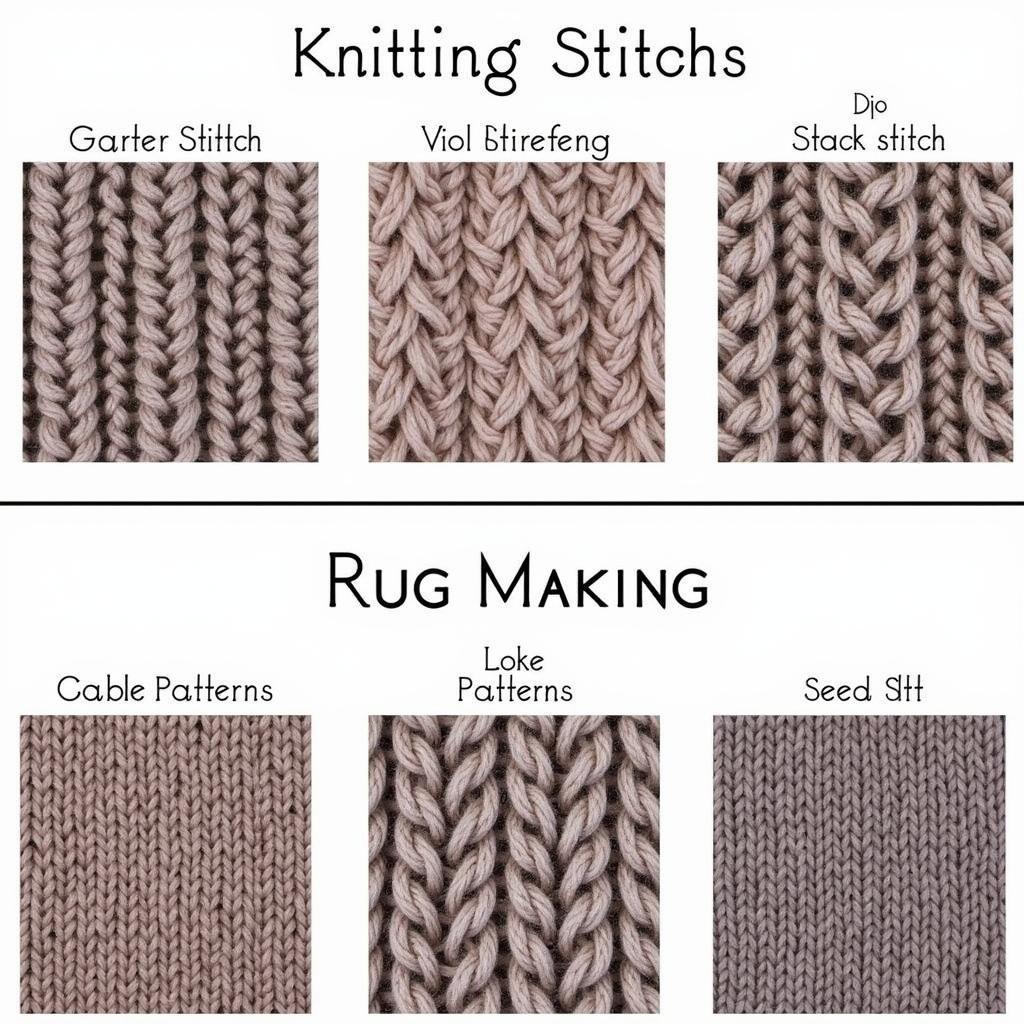Knitting Rugs: A Comprehensive Guide to Creating Cozy Floor Coverings
November 9, 2024Knitting Rugs offers a fantastic way to add warmth, texture, and personality to your home. Whether you’re a seasoned knitter or just starting out, creating your own knit rugs can be a rewarding and enjoyable experience. This guide will explore various techniques, materials, and tips to help you create beautiful, durable, and cozy knit rugs.
Choosing the Right Yarn for Your Knit Rug
The yarn you choose plays a crucial role in the final look, feel, and durability of your rug. Consider factors like fiber content, weight, and texture. Natural fibers like wool and cotton are popular choices for their softness and durability. Synthetic fibers like acrylic and nylon offer excellent wear resistance and are easier to clean. For a chunky, textured rug, choose a bulky or super bulky weight yarn. Finer weight yarns can be used for more intricate designs.
For a rug that will stand up to heavy foot traffic, choose a durable yarn like wool or a wool blend. If you’re knitting a rug for a less frequently used area, you can experiment with more delicate fibers like cotton or linen. Think about the overall aesthetic you want to achieve and choose a yarn that complements your home décor.
Popular Knitting Techniques for Rugs
There are numerous knitting techniques you can use to create unique and stylish rugs. Garter stitch is a simple and classic choice, producing a textured, reversible fabric. Stockinette stitch creates a smooth, flat surface, perfect for showcasing intricate colorwork. For a more open and airy texture, consider using lace patterns.
Experimenting with different stitches and techniques can add visual interest and depth to your rug. Cable patterns create a raised, textured design, while seed stitch provides a subtle, nubby texture. You can even combine different stitches within the same rug to create a truly unique piece.
 Various Knitting Techniques for Creating Rugs
Various Knitting Techniques for Creating Rugs
How to Knit a Simple Rectangular Rug
Creating a simple rectangular rug is a great project for beginners. Cast on the desired number of stitches based on the width of your rug. Knit every row in garter stitch until the rug reaches your desired length. Bind off and weave in the ends. This simple method allows you to create a functional and stylish rug with minimal effort.
Adding Fringe and Other Decorative Elements
Once you’ve finished knitting your rug, you can add fringe or other decorative elements to personalize it. Fringe can be added to the ends of the rug for a bohemian touch. Tassels, pom-poms, or even beads can be added for extra flair. Get creative and experiment with different embellishments to create a rug that truly reflects your personal style.
knit rugs can be customized with various decorative elements. Consider adding tassels or braids along the edges for a more intricate look.
Caring for Your Knit Rug
Proper care will help extend the life of your handmade rug. Regular vacuuming will remove dust and dirt. Spot clean spills immediately with a damp cloth. For deeper cleaning, hand wash your rug with a mild detergent and lay it flat to dry. Avoid harsh chemicals and excessive scrubbing, which can damage the fibers.
Conclusion: Enjoy the Warmth of Your Handmade Knit Rug
Knitting your own rug is a satisfying way to add warmth, style, and personality to your home. By following these tips and techniques, you can create a beautiful and durable knit rugs that you’ll cherish for years to come. Experiment with different yarns, stitches, and decorative elements to create a truly unique piece that reflects your individual style and adds a cozy touch to your living space.
FAQ
- What is the best yarn for a knit rug?
Wool and cotton are popular choices for durability and softness. - What knitting needles should I use for a rug?
Larger needles create a chunky, textured rug, while smaller needles produce a tighter fabric. - How do I clean a knit rug?
Regular vacuuming and spot cleaning are recommended. Hand wash with a mild detergent for deeper cleaning. - How long does it take to knit a rug?
The time varies depending on the size and complexity of the rug. - Can I knit a rug with recycled yarn?
Yes, using recycled yarn is a sustainable and creative option. - What are some popular stitch patterns for knit rugs?
Garter stitch, stockinette stitch, and cable patterns are commonly used. - How do I prevent a knit rug from curling?
Blocking the finished rug can help prevent curling.
Common Knitting Rug Scenarios:
- High-traffic areas: Opt for durable yarns like wool or synthetic blends and consider tighter knit patterns for longevity.
- Bedrooms and nurseries: Soft, natural fibers like cotton or merino wool are ideal for creating cozy and comfortable rugs.
- Outdoor spaces: Choose weather-resistant synthetic yarns and ensure proper drainage to prevent mildew.
Further Exploration:
Check out our other articles on rug making techniques and yarn selection. Learn more about different knitting stitches and how to incorporate them into your rug designs.
When you need assistance, please contact us at Phone Number: 0915117113, Email: [email protected] or visit our address: Hamlet 3, Binh An Quarter, Phu Thuong Commune, Viet Nam, Binh Phuoc 830000, Viet Nam. We have a 24/7 customer service team.